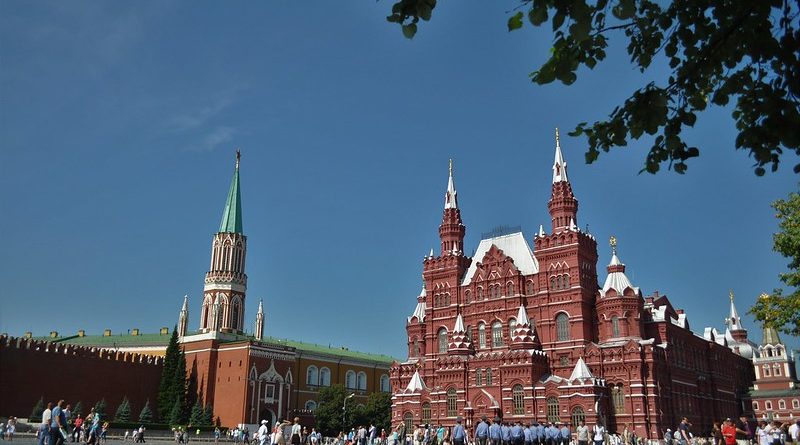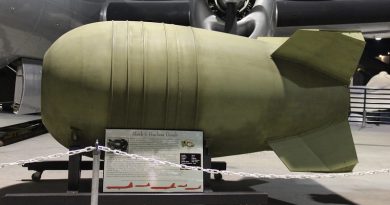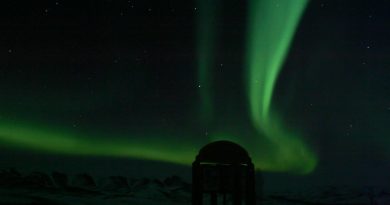The Top 10 Things To See & Do In Moscow
One of the largest cities in the world, Moscow is the political, economic and cultural capital of Russia. Steeped in centuries of history, Moscow is sometimes nicknamed ‘The Third Rome’ due to its significance and size. An increasingly modern urban centre with one of the best public transport systems in the world, one still cannot avoid the centuries of fascinating cultural history in the city.
Red Square
The main hub of the city, Red Square is very much the centre of the city, containing a number of important cultural and historical landmarks. Most significant of which is the Kremlin, the official residence of the Russian President. The former residence of Russia’s monarchs-the Tsars-the Kremlin is a heavily fortified complex dating back to the 15th Century. The most recognisable building is Saint Basil’s Cathedral, a visually-striking, multi-coloured building dating back to the mid-16th Century. Commissioned under the command of Ivan the Terrible following the capture of Kazan, the cathedral was a key icon of Russian Orthodoxy for many centuries. Following the rise of Communism and by extension the policy of state atheism, the church was secularised as a public museum, a function it serves in the present day. The Lenin Mausoleum is another important historical site as the burial site of Vladimir Lenin, a key figure in Russian political history as the first leader of the Soviet Union. Also of interest to visitors and locals is GUM, a large department store with an impressive, grandiose facade.
Bolshoi Theatre
Built in the early 19th Century, the Bolshoi Theatre is an iconic venue and the heart of the eponymous Bolshoi Ballet and Bolshoi Opera, both of which are amongst the most esteemed in the world. Known as much for the prestige of its ballet and opera companies as it is for its neoclassical exterior, designed by the notable architect Joseph Bove. The Bolshoi Theatre is amongst the most recognisable buildings in Russia, and one of the country’s most important cultural centres.
Gorky Park
One of Moscow’s main social hubs, Gorky Park is a 300-acre space of greenery and one of the largest public parks in the city. Named in honour of the seminal Russian writer and political activist Maxim Gorky, the park was initially constructed as a cultural project promoting a futuristic image of a Socialist Utopia. The park underwent a significant reconstruction in the new millennium, and this has seen the park fulfill its initial promise as a cultural epicentre of Moscow city life.
Pushkin State Museum of Fine Arts
Moscow’s pre-eminent art museum, the Pushkin specialises mainly in European art although it also has a considerable collection of antiques. Initially purposed as an archaeological museum, the Pushkin boasts a substantial collection of Hellenistic artefacts. Named for the seminal Russian poet Alexander Pushkin, the museum was built just prior to the outbreak of the Russian Revolution. With a rich, diverse collection of art and artefacts, the Pushkin is one of Moscow’s most important cultural institutions.
Garage Museum of Contemporary Art
One of Moscow’s newer museums, the Garage Museum of Contemporary Art is the city’s pre-eminent contemporary art museums. Following a major renovation in 2015, the museum has hosted exhibitions of a number of significant modern artists including Taskashi Murakami, Mark Rothko and Jeff Koons. The museum’s ever-expanding permanent collection of contemporary art is the best of its kind in the city and certainly worth a visit for any art lovers.
Peter the Great Statue
The eighth-tallest statue in the world, this landmark commemorates the eponymous former Tsar of Russia, who undertook a period of massive modernisation and Westernisation in the early 18th Century, replacing the political and social systems of his Kingdom with those influenced by the Enlightenment. The statue, built in 1997 is also a tribute to the Russian Navy, established by Peter the Great. Weighing an astounding 1,000 tonnes, the statue is a richly-detailed, monolithic sight to behold.
Novodevichy Convent
One of the most well-preserved historical sites in Moscow, the Novodevichy Convent dates back to the 16th Century in the Muscovite Period, surviving throughout the Imperial and Soviet Periods into the present day. Within its confines are a number of breathtaking historical buildings and structures, including the Cathedral of Our Lady of Smolensk, a tall bell-tower and a necropolis. The Convent is both one of the most picturesque historical sites in the city and one of the most informative about the city’s extensive history.
Danilovsky Market
Considered by many to be the city’s best farmer’s market, the Danilovsky Market, offering fresh produce alongside authentic, traditional Russian cuisine as well as a number of stalls specialising in more exotic, international foods. The market was designed as a tribute to Soviet-era farmers’ markets, and while it does not entirely capture this atmosphere, it is still one of the best spots in town for food lovers.
Kolomoneskoye
Located on the outskirts of Moscow, Kolomenskoye is a former royal estate known for a variety of distinct, magnificent historical buildings. The most well-known of these is the White Column of Kolomenskoye, or the Ascension Church, which dates back to the early 16th Century, having been built in 1532 in honour of Ivan the Terrible. The Ascension Church is one of the most magnificent religious buildings in the entirety of Russia, its unique stone design standing out from many other churches built in the same time, which often adhered to Byzantine architectural influences. The 390-hectare complex consists of a variety of other buildings from various time periods, and is a good place for to can marvel in the extensive history of Russia.
Memorial Museum of Cosmonautics
The Russian Space Program was a focal point of Soviet success during the Cold War and remains a source of pride for the country. This museum, one of the most popular in Russia, is a celebration of the incredible endeavours of the space program during this period, focusing particularly on major figures and moments such as Yuri Grigarin and the Sputnik satellite. A testament to Russian patriotism, the museum is one of the most interesting and accessible in the city.




